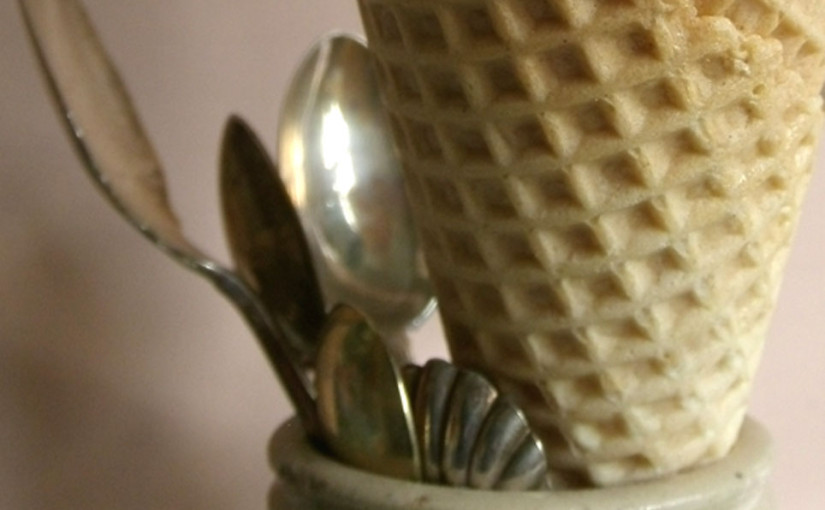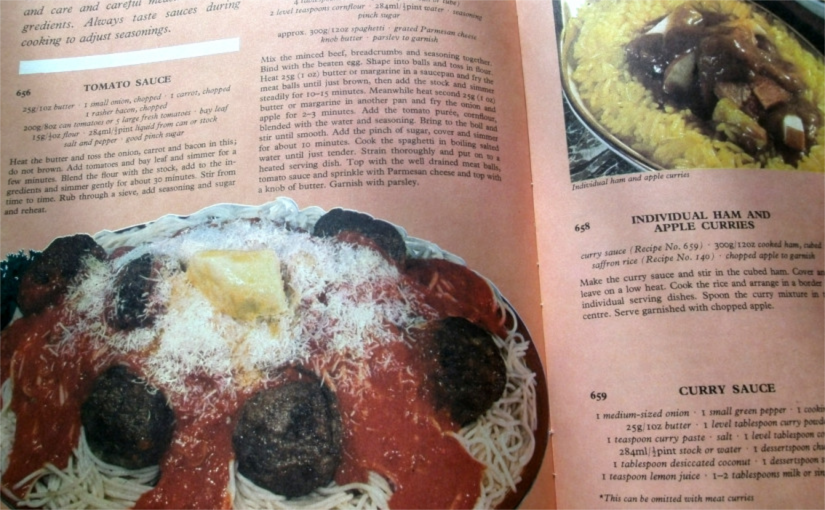Basic ice-cream recipe
I’m very fond of ice-cream. Good ice-cream. The stuff made out of cream, not dried skimmed milk and vegetable oil (check the ingredients on the packet, you’ll be surprised). However, as I’m sure you’re aware, that stuff costs a packet these days, and for increasingly small portions…or should that be decreasingly?
Anyway, the good news is that ice-cream is easy to make at home; and for a fraction of the price. You don’t even need an ice-cream machine, though you will get better results if you do use one. I’m lucky enough to have a super-duper, self freezing ice-cream maker. It’s ace, best kitchen gadget ever, even plays a tune when it’s finished. It took a lot of saving up for though. There are other, less expensive, machines out there, usually the type where you have to put the bowl in the freezer overnight. I used to have one of those; it was fine, but you had to take out one of the freezer drawers to get the bowl in, which was a nuisance.
And if you don’t have a machine? You’ll be pleased to know that it’s perfectly possible to make ice-cream without anything more complicated than a plastic tub and a fork. There are many recipes out there that claim to be ‘no-churn’; alternatively, you take the mixture out of the freezer every hour and beat it up with a fork to break up the ice crystals. Repeat until the mixture is too firm to beat. It won’t be as smooth as machine made, but if you don’t mind the occasional chunk of ice, that’s you sorted. It will also set a lot harder, so give it time to soften before serving or you’ll end up bending the spoon!

What about food allergies? My go-to recipe contains milk and eggs. If you are allergic to dairy, you can replace the milk with whatever alternative you prefer. If you are vegan, or allergic to eggs, you can thicken your custard with extra cornflour. I can’t promise the results will be the same, but at least you will have some ice-cream.
Basic custard based ice-cream recipe
Makes approximately 1 litre
This is the recipe I use for most ice-creams. It’s fairly simple and gives good results.
- 300ml milk or milk alternative
- 300ml double (heavy) cream or cream alternative
- 90g caster sugar
- 4 egg yolks
- 1tsp cornflour (this stabilises the custard)
Separate the eggs. You can freeze the whites to make meringue or angel cake later on.
Beat the yolks with the sugar and cornflour, in a heat proof mixing bowl, until pale and creamy.
In a small saucepan, heat the milk, or milk alternative, to boiling point. Turn down the heat to medium low.
Whisk the hot milk into the egg yolks (not the other way round or it will curdle).
Return the mixture to the saucepan. Stir briskly, preferably using a spoon or spatula with a flat edge. and making sure you are scraping the mixture off the bottom of the pan. Alternatively, heat in a double boiler; you ought to anyway, but it takes a lot longer.
When the custard has thickened to the consistency of single cream, remove from the heat. Pour the custard into a jug, and add the cream. If the custard is a bit lumpy, whisk it and strain through a sieve.
Set aside to cool, then chill in the fridge until really cold. The success of your ice-cream machine depends on all of the ingredients, even extra bits like chocolate chips, being chilled.
When it has been chilled for a few hours you are free to use it in your machine, or by your preferred method.
The first patent for an ice-cream maker was granted to Nancy Johnson, of Philadelpia, in 1843.


